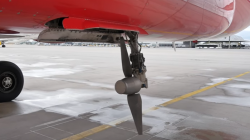With Oz's main domestic and international airports, there are 'big ticket' items that should improve operations - such as new runways.
There are also smaller scale annoyances that delay flights, such as passengers who dawdle and aren't at the gate when boarding is about to close. They're not the fault of deficient airport infrastructure.
What one smaller thing, if any, would our aviators suggest that could improve timekeeping at particular airports in Australia and to what airports does it apply?


















